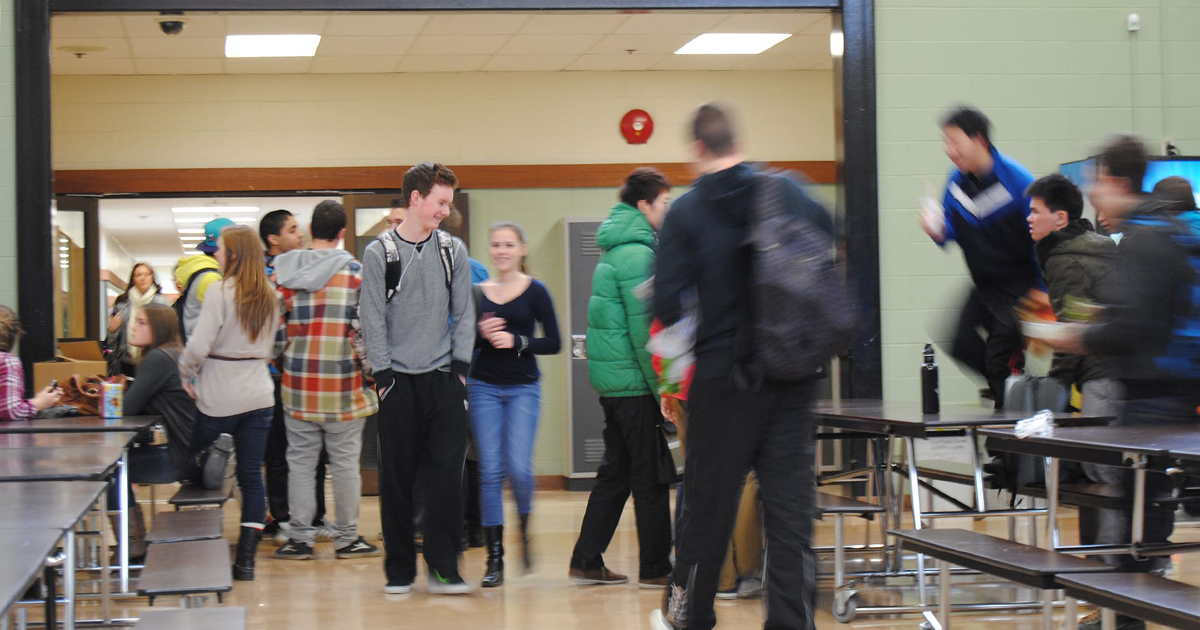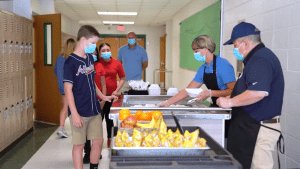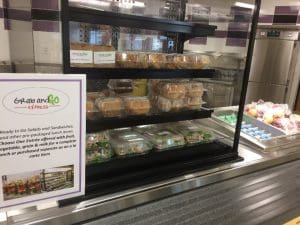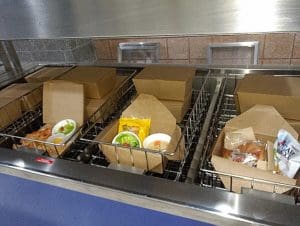LTI and Charles Pace & Associates are proud to have played a part in helping…
Rescuing schools post-pandemic: Ideas for using American Rescue Plan relief funds to support K-12 meal programs

School districts across the U.S. are poised to receive millions in funds from the recently enacted American Rescue Plan (ARP), which provides $122 billion to help K-12 schools reopen, operate safely, and support student health and learning.
The anticipated uses and needs are as varied as schools themselves, but many may seek to catch up on overdue maintenance or updates that have been neglected over the past year (or longer).
Among these priorities may be a push to update school nutrition programs, which have taken a particular kind of beating since the start of the pandemic.
Schools interested in using ARP funding to support student feeding might consider these ideas for improving or updating cafeteria function in both the near- and long-term.
Tackle immediate needs to support safe serving during COVID
Safely serving school meals has been a thorny issue since the first schools started to reopen for in-person learning.
Many months later, it continues to be what some experts call a “weak link” in the school day — a time when masks are not able to be worn and students are more likely to closely congregate in indoor environments.
CDC recommendations for serving meals at school include potentially offering meals in classrooms by using rolling carts or coolers to deliver grab-and-go meals to students.
If classroom service isn’t feasible or desired, the CDC recommends cafeteria service be amended to allow for social distancing, including setting up multiple food pick-up points. “For schools with limited space, consider using tables or rolling kiosks to offer meals in a nearby area, like the hallway, to set up meal service,” the agency suggests.
Schools struggling to meet these guidelines may find it useful to invest in equipment that helps support safe serving initiatives. Mobile carts and kiosks, like those offered by LTI, can make it easy.
Use them to deliver meals directly to students in classrooms or other remote locations. Set them up around the perimeter of the cafeteria to keep students from congregating closely in one line to retrieve their meals. Place them by doors to the school to quickly hand out breakfast as students arrive in the morning.
(For more on this, check out these 4 options for safe serving during the pandemic and ways to support them.)

Address the known problems
Long lines are among the most common complaints about school cafeterias.
Before the pandemic (and likely after), lines were a nuisance for students and workers alike, often dissuading students from participating in school lunch. During the pandemic, the lines can be downright hazardous by forcing students to stand in close proximity while waiting for their meals.
Make lunchtime easier, more appealing and safer by adding a serving line or additional serving stations for plated meals. Or implement stations for packaged grab-and-go options so students don’t have to go through the traditional serving line at all.

Think long-term by modernizing equipment
Budget-strapped schools often keep their serving counters in use long beyond their intended lifespan. Doing so can lead to more frequent failures (and repairs), inefficient operation and an inherent limitation to what the cafeteria can serve.
Modernizing your line with temperature-switching wells or vertical heated and cooled shelves can support more menu flexibility. Diversifying meal options makes school lunch more appealing to students, potentially boosting participation and satisfaction for next year and beyond.
QuickSwitch wells from LTI, for instance, can serve hot, cold or frozen foods side by side at the same time and can switch between temperatures in an hour or less, allowing nutrition leaders almost limitless food holding and serving options. Taco bars, potato bars, poke bowls and more — all of it is easier than ever with the support of modern technology.
Evaluate the changing landscape
The pandemic has caused schools to change how they serve students meals to ensure safety and appropriate social distancing. And some of those changes may be here to stay.
At this district in Massachusetts, positive feedback from students about coronavirus-related moves is causing leaders to consider some permanent changes, like using scattered grab-and-go stations throughout the school for easy, convenient pickup.

Consider how your school and its students might benefit from adopting some of the practices and processes that the pandemic inspired.
Make the case
So you’ve got some ideas. Now how do you make the case to school or district administration for accessing the funds?
Bear in mind that eating filling, healthy meals at school has been shown to raise math scores and overall grades, reduce hyperactivity and absenteeism, and improve student health. Meals served at school tend to be healthier than meals from brought home, so boosting school meal participation can have a more profound effect on students.
Increasing meal participation through menu and process improvements has the added benefit of increasing the nutrition program’s revenue, allowing it to reduce dependence on the school’s general fund. Investing ARP funds into making lunch more appealing can lead to a long-term benefit for both the school and its students.
Not sure where to start in making updates? The school lunch experts at LTI can help with every step of the process. Our VisionDesign service puts cafeteria design experts at your disposal to help with everything from signage updates or custom seating layouts to a full cafeteria revamp.
Contact LTI to tap into our years of experience to help envision, design and build the equipment to make it all possible.



